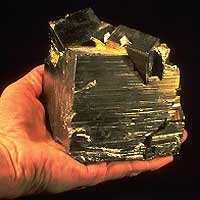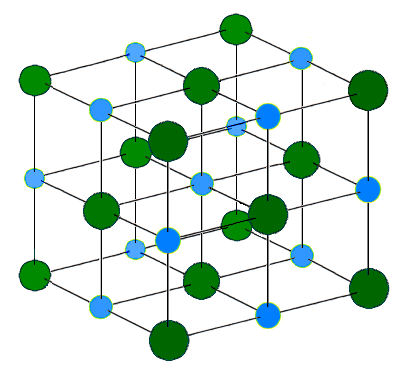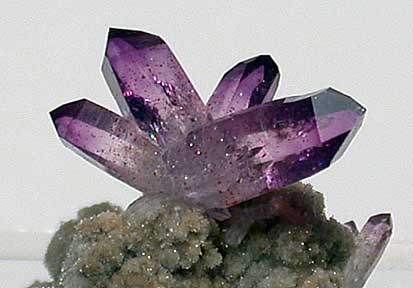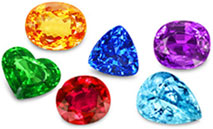 |
Minerals |
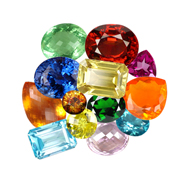 |

Properties of Minerals
Crystal Form
- Each mineral exhibits its own orderly internal arrangement of atoms
- Given enough space, each mineral will externally express this orderly arrangement developing well formed crystals
Luster
- The appearance or quality of light reflected from the surface of a mineral
- Minerals can have metallic luster giving a metallic shiny appearance
- Minerals can have non-metallic luster
Non-metallic luster minerals are described as...
- vitreous = glass-like in appearance
- pearly
- silky
- resinous
- dull = earthy
- A third category of luster, sub-metallic, appear somewhat metallic in luster
Streak
- The color of a mineral in powdered form is its streak
- The streak is obtained by striking a mineral across an unglazed porcelain plate
- The streak color of a mineral is usually a more reliable identification property than the color of the mineral because it does not vary from sample to sample
- Metallic luster minerals have a dark, dense streak
- Non-metallic luster minerals have thinner, lighter streaks
Color
- An unreliable diagnostic property because slight impurities cause vast color differences
Hardness
- A measure of the resistance of a mineral to scratching or abrasion is known as its hardness
- Hardness is very useful in mineral identification
The Mohs Hardness Scale is used by geologists for mineral identification
- 10 minerals of known hardness are arranged from hardest(10) to softest(1)
- By scratching an unknown mineral with a mineral of known hardness, the unknown mineral's hardness can be determined
- if 2 minerals are of the same hardness, they will not scratch each other
- a harder mineral will scratch a softer one
- Other tools may be useful in hardness tests
- a fingernail has a 2.5 hardness
- a copper penny has a 3.5 hardness
- a piece of glass has a 5.5 hardness
Cleavage
- The tendancy of a mineral to break along planes of weaker bonds is cleavage
- Smooth surfaces are produced in cleavage
- Cleavage occurs when minerals break evenly and is described by the number of cleavage planes
Fracture
Minerals that do not exhibit cleavage, fracture
- Conchoidal fracture - break into smooth curved surfaces
- Splinters or fibers
- Irregular fracture
Specific Gravity
- Specific gravity compares the weight of a mineral to the weight of an equal volume of water
Other Properties
- texture - greasy, soapy
- malleability
- taste (not recommended)
- magnetic
- smell
- optical properties
- effervescence
- elasticity
Test your knowledge with this ten question quiz: http://www.cobweb.net/~bug2/mineral.htm






